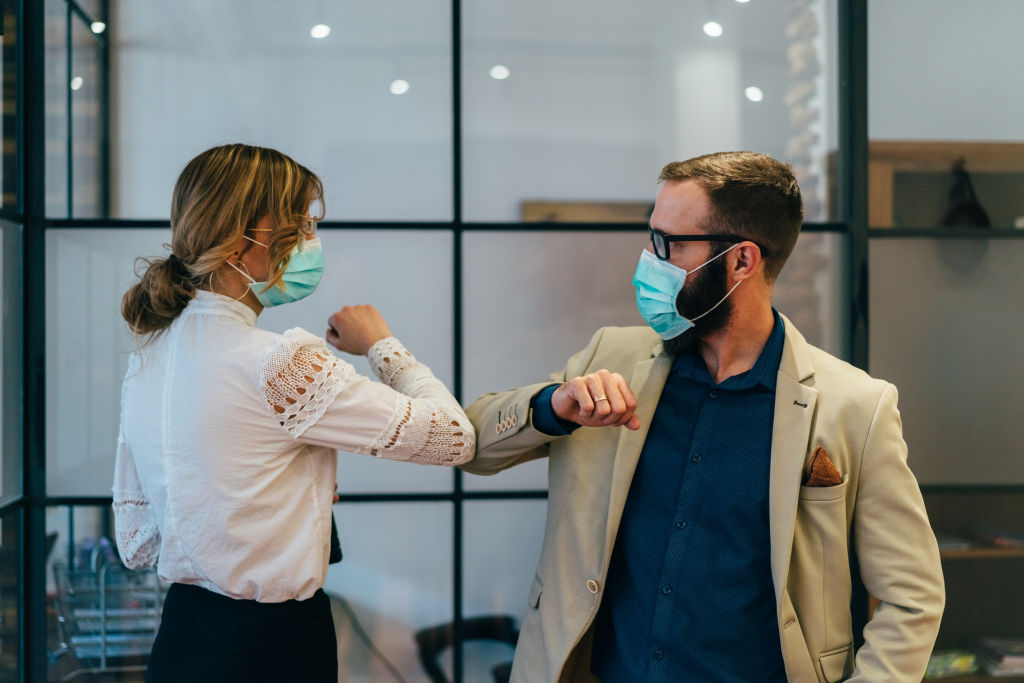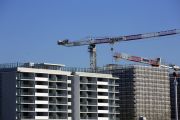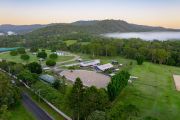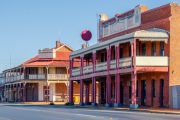
'Sneeze screens' and colour-coded walkways: What to expect when you return to the office after the coronavirus shutdown
Desks placed far apart, colour-coded carpeting indicating where you can and cannot walk and “sneeze screens” could all become standard fixtures as workers begin their slow return to the office, according to Cushman & Wakefield.
The company’s Sydney office is getting ready to debut the “six-feet office” model in Australia after recent announcements by state and federal governments about the gradual resumption of normal activities in the wake of the pandemic, having already implemented the same model in its Amsterdam office.
“Six feet” is a reference to the standard recommendation of 1.8 metres for social distancing in many European countries.
From May 18 clients, tenants and landlords seeking an understanding of the types of changes – permanent or temporary – that they can make to their office in order to facilitate the safe return to work can book a private tour of Cushman & Wakefield’s Sydney office.
“The plan will be to take guests through the space and showcase the various elements of our six-feet office concept, or living lab, as we to help clients with their individual needs,” said Lisa Mhaya, director of workplace solutions at Cushman & Wakefield’s occupier services division.
Ms Mhaya said the changes that workplaces could implement ranged from the addition of signage and hygiene procedures to structural changes to the office.
“The unique thing we have done in our Sydney office is the adoption of a hybrid model: three different ways of implementing the core ‘six-feet office’ principles, and options that can be delivered from a minimal works-and-costs scenario up to a more comprehensive change,” she said.
Changes implemented at the company’s Amsterdam office have included a visual “route” – stickers and colour-coded carpet – that employees follow from the moment they reach the building’s entrance, through the lifts and to their desk that maintains social distancing for the entire process.
They also include “sneeze screens”– perspex panelling between desks that prevents the spread of airborne particles between cubicles.
Rules of the six-feet office include navigating the office in a clockwise direction only and using a new disposable “desk pad”, a paper covering for the desk, each day.
The company is also making available a “safe six checklist” for companies navigating the return to work, spanning from advice around implementing a one week in office/one week work from home pattern of work, to disabling touch screens and using temperature checking at building entrances.
Identifying and cleaning ‘touchpoints’ number one priority
Another commercial agency JLL has developed a “Building Re-Occupation guide” for the office buildings it manages across Australia, with a focus on identifying the “touchpoints” that need to be managed to reduce the chance of transmitting COVID-19.
“An important first step is to map the journey of tenants, customers and visitors as they arrive, enter and move through your property. For each stage of the journey, consider all touchpoints they will encounter and measures you will require to allow for social distancing to be maintained,” said Richard Fennell, JLL’s head of property management Australia.
“There are many touchpoints to consider – foyers, elevators, reception areas, kitchens, bathrooms, common equipment like printers and admin supplies, common area furniture, access passes and waste facilities.”
Common areas like bathroom facilities may need to be reconfigured to allow for extra spacing requirements, according to Mr Fennell.
“This could, for example, result in alternate hand basins being closed off from use,” he said.
Other than physical changes to the workspace, the post-pandemic workplace will have an increased emphasis on changes to the background activities that might typically go unnoticed during the day-to-day operation.
For example, Cushman & Wakefield is advising that cleaning throughout the day – rather than after hours – will be important to not only ensure spaces are kept clean but also to put workers’ minds at ease.
Essential safety programs like emergency drills and evacuation processes, and protocols for security and concierge staff would also require review, said Mr Fennell.










